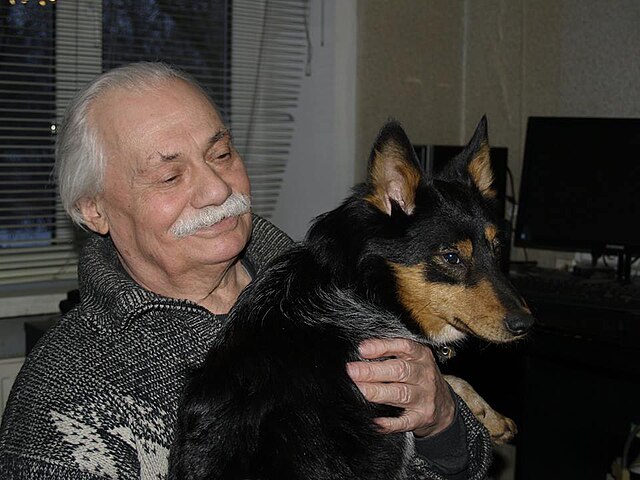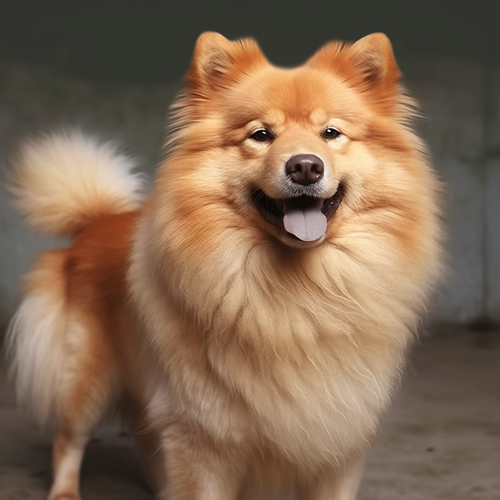The Russian-European Laika is a hunting spitz breed, and the smallest of the three Russian hunting spitz breeds recognized by the FCI. He was originally used for hunting and treeing game such as racoon and squirrel, but has also been used for hunting duck as well as larger game. His specialty, however, is squirrel. Like other barking spitz, he was bred to use his voice freely once game has been treed – and as such he tends to bark quite enthusiastically and frequently on a day-to-day basis as well.
The medium-sized Russian-European enjoys spending time outside and burning off energy, although he definitely needs to spend time with his owner/family as well. Suspicious of new people yet loving, friendly and affectionate toward his family, he gets along with children and can make a very nice companion in the right home. This is a loyal breed and once a bond has formed, he is dedicated to “his humans” for life – even to the point that he can be difficult to re-home. Although “iffy” with strange dogs he can get along with other dogs in the same household as long as he was raised with them.
The Russian-European Laika’s suspiciousness of strangers and territorial nature makes him a great guard dog as well, but make sure to socialize him as a puppy to prevent anxieties and fears in adulthood. It is normal for this breed to not like being touched by strangers, however not normal for them to bite unless they or their family are being provoked. A Russian-European that bites without being provoked is not typical and more likely had not been given the proper socialization as a puppy. Another note about their naturally suspicious nature – this breed doesn’t always get along with unfamiliar dogs and might not make the best candidate for dog parks.
Russian-European Laikas love to learn and definitely should be taught obedience from an early age! They need a job to do, both mentally as well as physically, and basic obedience is the building block upon which other training can be built upon. They can be easy to train when methods are kept fairly soft. Overly harsh training can cause them to shut down. Make sure to train a solid recall as a high prey drive will cause them to bolt after small prey!
Russian-Europeans have a lot of energy and endurance, requiring a good bit of exercise each day. Hunting with the dog is ideal although not always practical for every lifestyle so at very least, make sure that he gets plenty of time to run free in addition to daily walks, jogs or hikes. These smart and active dogs can become destructive if not given enough of a physical outlet. Regular exercise is an important component of his health as well. While the breed is very healthy in general, they do need to have plenty of opportunities to run around! As such, they do better in larger homes and are not the best choice for apartment-dwellers.
Although the Russian-European Laika may look very similar to the Karelian Bear Dog, if put side-by-side one can see that this breed is both shorter and slighter in build than his cousin. This makes sense, considering that one was bred with a specialization in bear and the other was created more for the purpose of small game hunting! This said, both should have a thick double coat capable of keeping them warm in the Russian outdoors. While Karelians are always black and white, the Russian-European can be gray, salt/pepper, or black with white markings (although most modern dogs are black/white).
When hunting, the Russian-European has an impeccable sense of direction and doesn’t tend to get lost. He is also excellent at tracking, both on the ground as well as using his air-scenting abilities. He is more likely to tree and/or bark at the animal rather than rush in and kill it, giving the hunter a chance to shoot. While he has been used for hunting very large game such as moose and bear, he is most in his element when hunting squirrel or other small furred game.




